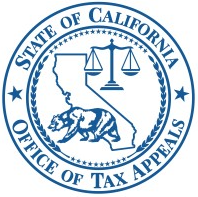 The California Office of Tax Appeals (OTA), in a decision marked “not precedential” in the Matter of the Appeal of Microsoft Corporation & Subsidiaries, held 100 percent of repatriated dividends under the Tax Cuts and Jobs Act (TCJA) must be included in the taxpayer’s sales factor denominator.
The California Office of Tax Appeals (OTA), in a decision marked “not precedential” in the Matter of the Appeal of Microsoft Corporation & Subsidiaries, held 100 percent of repatriated dividends under the Tax Cuts and Jobs Act (TCJA) must be included in the taxpayer’s sales factor denominator.
- First, the OTA rejected the “matching principle” included in FTB Ruling 2006-01, and supported its holding based primarily on the plain language of Cal. Rev. & Tax. Code § 25120(f)(2), and legislative history.
- Second, the OTA rejected the FTB’s argument that repatriated dividends constitute a substantial and occasional sale of property under FTB Regulation 25137(c)(1)(A).
- Last, the OTA determined the FTB failed to carry its burden to show the taxpayer’s inclusion of 100 percent of repatriated dividends in the sales factor denominator is distortive under Cal. Rev. & Tax. Code § 25137.
- Anyone may submit a request to the OTA requesting the decision be marked “precedential.”
The taxpayer contended 100 percent of dividends repatriated under the TCJA should be included in its sales factor denominator, without a reduction for California’s 75 percent dividend-received deduction (i.e., Cal. Rev. & Tax. Code § 24411). The taxpayer supported its position based on the plain language of the statute defining gross receipts (i.e., Cal. Rev. & Tax. Code § 25120(f)(2)), legislative history, and legal authority establishing dividends as gross receipts notwithstanding deductions. The Franchise Tax Board (FTB) contended the amount of dividends deducted from the tax base by the dividend-received deduction should be excluded from the sales factor denominator pursuant to FTB Legal Ruling 2006-01 (Ruling 2006-01). Ruling 2006-01 states only net dividends are includable in the sales factor based on the rationale that the sales factor should only include receipts that produce business income included in the tax base. The FTB further contended the state legislature had endorsed Ruling 2006-01.
The OTA disagreed with the FTB, holding the plain language of Cal. Rev. & Tax. Code § 25120(f)(2) defines gross receipts to include dividends, and that no applicable exclusion applies to change this result. The OTA specifically dismissed the FTB’s reliance on Ruling 2006-01 as nonbinding, unpersuasive, and inconsistent with well-established law.
The OTA also considered and rejected the FTB’s secondary argument that the repatriated dividends constituted a “substantial and occasional sale” of property, excludable from the sales factor under FTB Regulation 25137(c)(1)(A). The FTB contended its regulation applies to any and all receipts included in the sales factor, including the dividends at issue. The OTA disagreed, holding Regulation 25137(c)(1)(A) only applies to the sale of tangible or intangible assets, which excludes dividends.
Last, the OTA considered and rejected the FTB’s alternative argument that including 100 percent of the repatriated dividends in the taxpayer’s sales factor was distortive under Cal. Rev. & Tax. Code § 25137. To succeed on its distortion argument, the FTB had a burden of proof to show that including these receipts in the sales factor was both qualitatively and quantitatively distortive under applicable law. The FTB contended qualitative distortion existed because the repatriated dividends were a one-time event due to the enactment of the TCJA and were therefore received outside the taxpayer’s normal course of business. The FTB also contended quantitative distortion existed because the profit margin from repatriated dividends was 6.25 times greater than the profit margin on the taxpayer’s main line of business, and because the taxpayer’s sales factors in prior years showed a steady pattern of increases disrupted by the repatriation.
The OTA rejected both arguments, holding the FTB failed to meet its burden. Specifically, the OTA determined qualitative distortion did not exist, notwithstanding the size of the dividend, because the taxpayer regularly received dividends including repatriated dividends from its various subsidiaries and controlled foreign corporations. The OTA also determined quantitative distortion did not exist because the difference in the profit margin on the dividend income was far less than existing precedent, the dividends made up similar proportions of both the tax base and sales factor, and the decrease in the overall apportionment formula, from 5.63 percent to 3.37 percent, was insufficient to support a finding of quantitative distortion. The OTA also held the departure from the historical upwards trend in the sales factor was not distortive when the departure resulted from a real change in business practices (i.e., beginning to regularly repatriate dividends).
Ultimately, the OTA’s decision reiterated that “gross receipts” still means gross as opposed to net, and accordingly rejected the FTB’s longstanding position that taxpayers must include only net dividends in the sales factor.
Although the decision is currently designated “not precedential,” taxpayers that file on a water’s-edge basis should still consider filing refund claims to include 100 percent of repatriated dividends in the sales factor denominator for any tax years that remain open under California’s statute of limitations.
Additionally, because the OTA has currently designated its decision as “not precedential,” any person may submit a request to make the decision precedential to the OTA pursuant to OTA Regulation 30502, and taxpayers should consider doing so in the event they believe this decision should be afforded the strongest level of authority possible for an OTA decision.
 SeeSALT Blog
SeeSALT Blog

